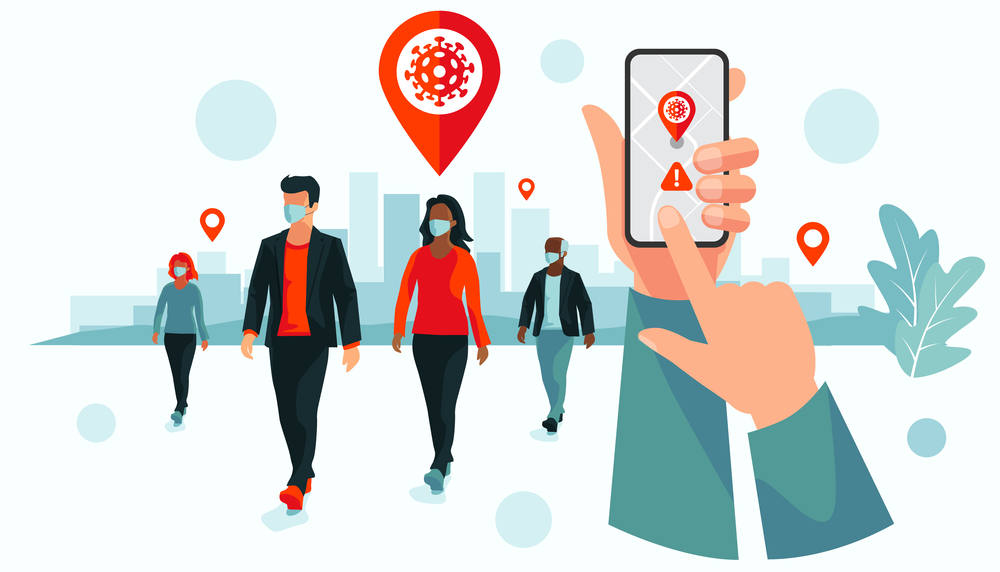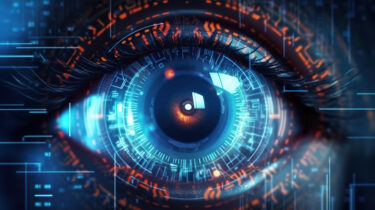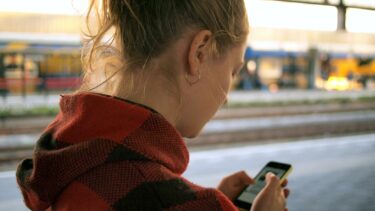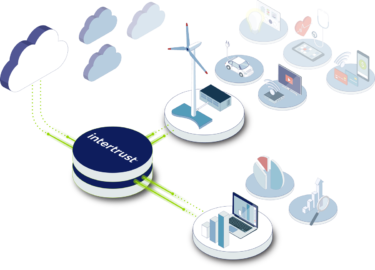The development of digital contact tracing apps to slow the spread of COVID-19 — a virus which disproportionately affects Black American, Hispanic, and Asian populations — could worsen human rights abuses in these marginalized communities.
Technology companies and governments across the world are rolling out bluetooth-enabled contact tracing apps to inform those who have been in close contact with COVID-19 infected patients, so that they can solicit testing and self quarantine.
The apps — which the US National Security Commission on AI has stressed should be strictly voluntary to download — work by sending anonymized IDs between phones that spend more than a few minutes in close proximity.
If a person becomes infected, they can choose whether or not to trigger the sending of an anonymous notification to other people represented by anonymized IDs on their phone.
According to Greg Nojeim, a Senior Counsel and Director for the Freedom, Security & Technology Project who spoke on a recent webinar organized by the Center for Democracy & Technology (CDT), benign factors affecting bluetooth signal strength — such as if the phone is in a pocket or behind a wall — could lead to false positive and false negative results.
A recent report by Guardsquare outlines other security concerns with these apps.
While governments such as Germany’s have opted for a decentralized approach to storing the data from these apps, others, Nojeim stressed, are pressing for these automatic notifications to be shared with health departments, and for location information to be collected.
For example, in the UK, France, and Norway, and US states Utah, North Dakota, and South Dakota, apps will store data in centralized servers which do not protect users’ privacy.
How does COVID-19 affect marginalized populations?
According to up-to-date data published by the Centers for Disease Control and Prevention (CDC) on COVID-19 deaths sorted by race, 19.1% of those who died from the virus were Black (who make up 13% of the US population), 14.4% were Hispanic (18% of the population) and 3.8% were Non-Hispanic Asian (approximately 6% of the population).
Around 39% of the deaths were of white people, 60% of the population.
Death rates from COVID-19 are therefore disproportionately higher among Black, Hispanic, and Non-Hispanic Asian communities, reported the APM research lab.
Overall, Black Americans are dying of COVID-19 at 2.3 times the rate of Whites and Asians, and 2.2 times the rate of Hispanic Americans.
According to Dr. Rhea Boyd, a pediatrician and child and community health advocate who testified in a recent Congressional hearing run by the Subcommittee on Health of the House Committee on Energy and Commerce, there are four reasons why these communities are suffering from COVID-19 at a disproportionate rate.
- Black American and Hispanic populations work disproportionately in key industries that require sustained public contact and therefore increased exposure to COVID-19.
- High rates of underlying illness and poverty among communities of color, driven by racially exclusive and discriminatory access to healthcare.
- The inequitable distribution of COVID-19 protections, such as access to running water, which leaves marginalized groups more vulnerable to catching the disease.
- The inequitable distribution of COVID-19 supports, including testing, primary healthcare access during the pandemic and mental health support.
Digital contact tracing apps not accessible to all
On top of this increased risk, Human Rights Watch (HRW) is concerned that not all marginalized populations will not be able to access digital contact tracing technology.
According to Pew Research from 2019, 30% of US adults who earn less than $30,000 per year do not earn a smartphone, which means they won’t be able to access the bluetooth technology.
And in the US, income gaps disproportionately affect communities of color. In 2014, according to Pew, the median Black household income was about $43,300, while the white household income was about $71,300. Black and Hispanic communities are also over twice as likely as whites to live in poverty, the same research shows.
Digital contact tracing may divert public health resources away from at-risk communities
Neema Singh Guliani, a Senior Legislative Counsel member at the, American Civil Liberties Union (ACLU), stressed in the CDC webinar that there are no safeguards in place to prevent a weak user base generating inaccurate data, which could mean public spending is diverted away from health resources for at-risk, marginalized communities.
HRW also points out that this could also lead to misguided advice on social distancing practices, which could also have a disproportionately negative effect on marginalized communities.
For the apps to work, Guliani says, basic healthcare access must first be available, and those who fall ill must be able to have the financial resources to self quarantine for two weeks and not face losing their jobs.
In the meantime, she says resources should be spent on providing accurate, fast and widely available testing for low-income neighborhoods.
Centralized data storage could lead to increased surveillance
For governments that have chosen to adopt a centralized approach to the data storage of digital contact tracing apps, there are no safeguards in place to prevent law or immigration enforcement from gaining access to this information, stresses Guliani.
For undocumented migrants, for example, this could mean they risk deportation, HRW points out.
This lack of data privacy could also give rise to the use of similar forms of digital surveillance — such as facial recognition technology — which can discriminate based on race, HRW adds.
‘Close enough is good enough’
The Sociable reached out to Oxford University Bioethics professor Michael Parker to comment on the safeguards in place to counteract the ethical downfalls of digital contact tracing. He was unable to respond.
For other advocates of digital contact tracing, such as Albert Gidari, Consulting Director of Privacy at the Stanford Law School Center for Internet & Society, who also spoke in the CDC webinar, its ethical flaws do not outweigh the urgent need to increase contact tracing in order to save lives.
The alternative of manual contact tracing, he says, is “slow,” “imperfect,” and “lacks scalability.”
Digital contact tracing apps, on the other hand, allow early-exposure notification which can reduce the rates of transmission of the virus, which are critical to its containment, Gidari claims.
With digital contact tracing, it’s simply a matter of “close enough is good enough,” he said.












